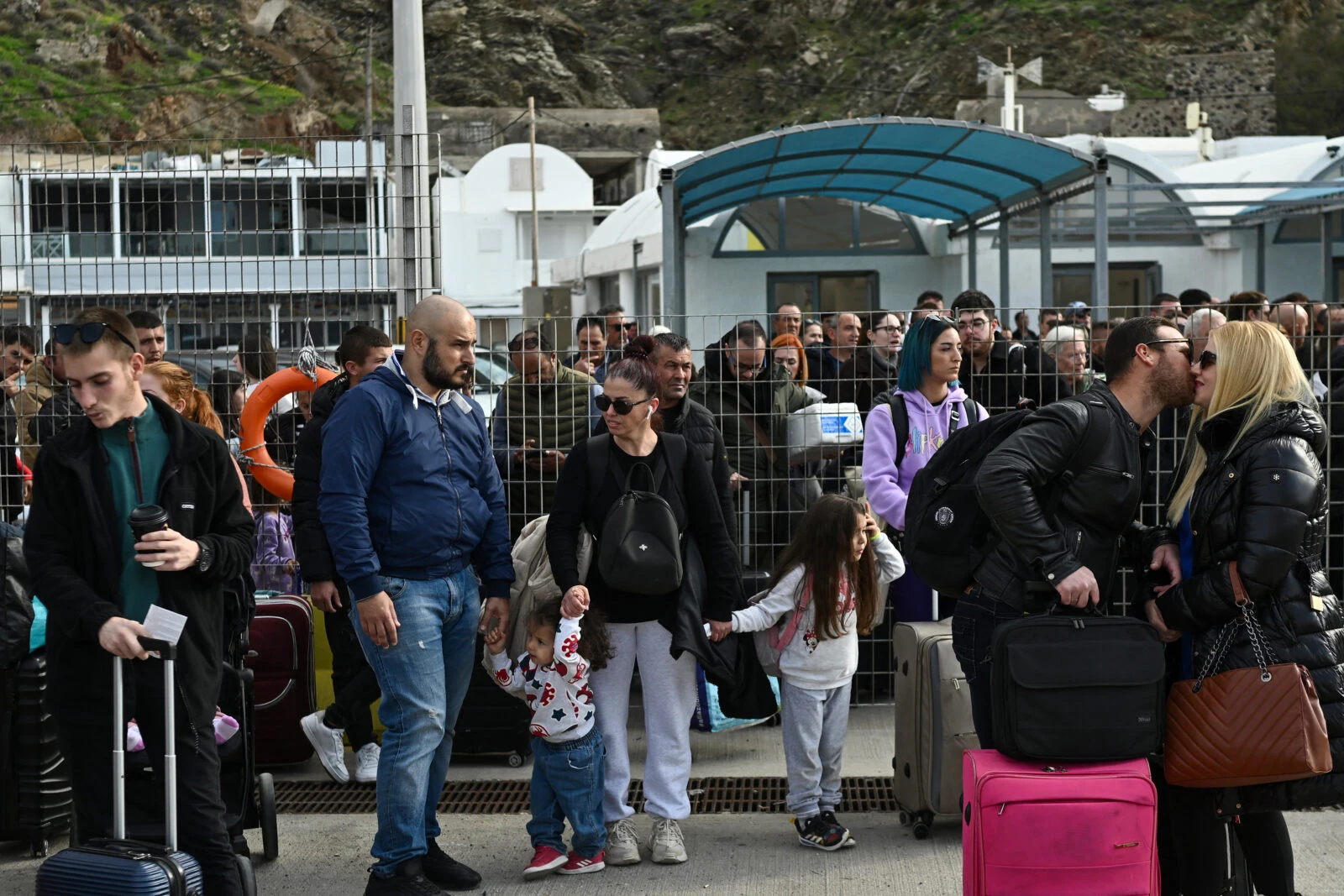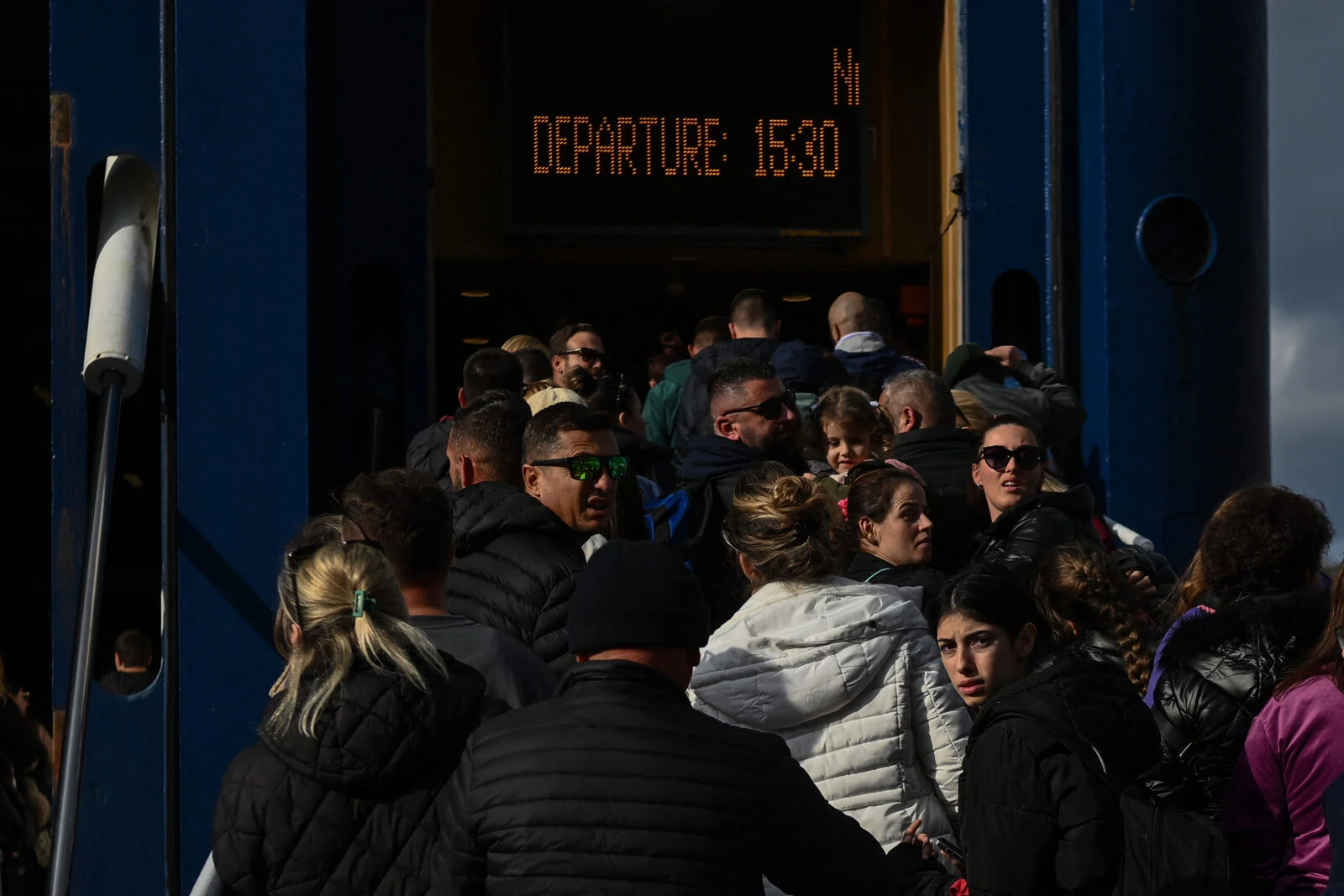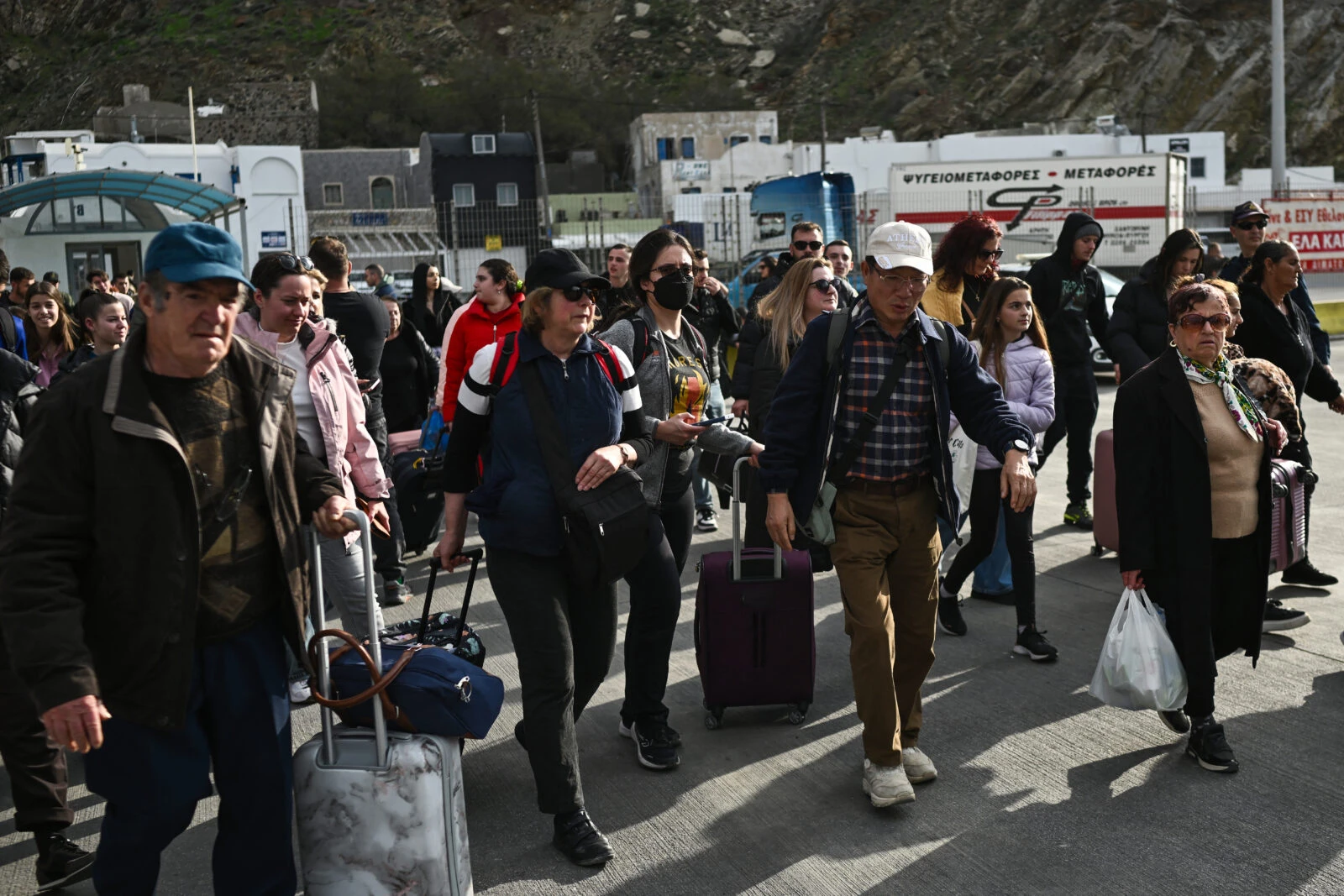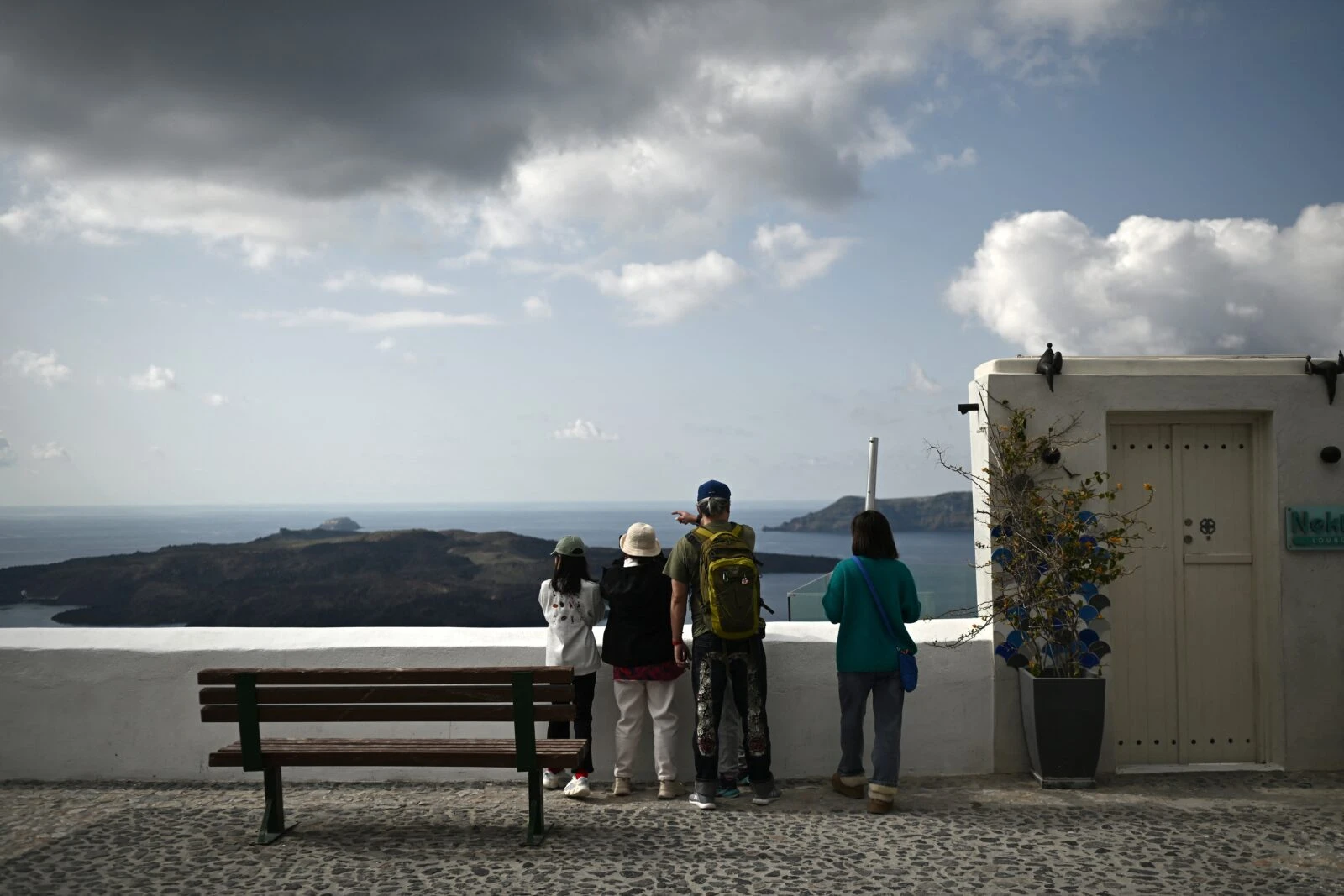Seismic activity intensifies near Santorini, raising concerns of a possible tsunami
 A view of the Greek Island of Santorini, in the Agean Sea on February 3, 2025. (AFP Photo)
A view of the Greek Island of Santorini, in the Agean Sea on February 3, 2025. (AFP Photo)
The Aegean Sea near Santorini has been experiencing continuous seismic activity over the past week, with over 400 tremors recorded.
On Monday, a 4.9-magnitude earthquake struck the region at 3:17 p.m. local time, fueling concerns about a possible larger event or tsunami.
Experts warn that while no immediate risk is evident, the ongoing earthquake swarm underscores the region’s complex tectonic activity and the potential for significant geological consequences.

Experts monitor increasing seismic activity
The tremors have been occurring in a tectonically active region where the African Plate is subducting beneath the Eurasian Plate along the Hellenic Arc. The area has historically experienced strong earthquakes and tsunamis.
Geophysicist Professor Dr. Naci Gorur noted that the region is close to Türkiye’s Aydin and Mugla provinces, cautioning that if a significant rupture occurs nearby, Türkiye could also feel its impact.
“There is a fault here that is capable of generating a tsunami. We must remain cautious,” he said.
According to Gorur, stress accumulation in the area results from multiple tectonic forces, including the movement of the North Anatolian Fault’s southern segment, which extends toward this region.
He emphasized ongoing tremors should not be dismissed as minor seismic events but rather as part of a broader geodynamic process.

Potential tsunami risk and precautionary measures
The possibility of a tsunami remains a concern if the seismic activity escalates into a stronger earthquake. Tsunami-prone faults exist in the region, and historical records indicate that past earthquakes in the area have triggered large waves.
Greek authorities have taken preemptive measures by evacuating parts of Santorini, closing schools, and deploying emergency teams. While these actions may seem excessive to some, Gorur commended the decision, stressing that proactive measures are crucial.
“A region that shakes every 15-20 minutes undergoes micro-deformation even if no visible destruction occurs,” he noted. “If a larger rupture happens closer to Türkiye, it could have a direct impact on our coastal areas.”

Türkiye’s earthquake preparedness questioned
The seismic activity near Santorini has reignited discussions on Türkiye’s earthquake preparedness.
Gorur pointed out that, despite repeated warnings, there has been little engagement from local authorities in Türkiye’s coastal regions regarding potential countermeasures.
“I have attended numerous meetings with both central and local governments, but I have never seen a mayor listen to me from start to finish,” he said, criticizing the country’s approach to disaster readiness.
He emphasized that earthquake preparedness should go beyond post-disaster reconstruction efforts and should involve proactive risk mitigation strategies, such as urban planning, zoning regulations, and stricter building codes.

Experts reassure that Istanbul, Anatolia not at risk
While the seismic activity near Santorini is being closely monitored, some experts have dismissed speculation that it could trigger earthquakes in other regions, such as Istanbul or central Anatolia.
Prof. Dr. Nurcan Meral Ozel, director of Bogazici University’s Kandilli Observatory and Earthquake Research Institute, stated that “there is no emergency for Türkiye at this time, but we are closely monitoring developments. These quakes do not pose a risk to the Marmara region.”
Similarly, Prof. Dr. Sukru Ersoy of Yildiz Technical University explained that “this earthquake swarm is not connected to faults in Istanbul or Anatolia, nor does it have the capacity to trigger seismic activity there. Any claims suggesting otherwise are purely speculative.”

Greek expert highlights opportunity for preparedness
Greek seismic engineer Professor Dr. Panayotis Karidis echoed the importance of using this period of seismic activity as a preparation window.
“If these tremors are foreshocks of a larger earthquake, we are fortunate to have time to take action. This is different from the February 2023 Türkiye earthquakes, where no significant warning tremors occurred beforehand,” he explained.
Karidis compared the situation to past events in Santorini, where people historically evacuated in response to minor earthquakes, thereby avoiding casualties when larger quakes or volcanic eruptions followed.



